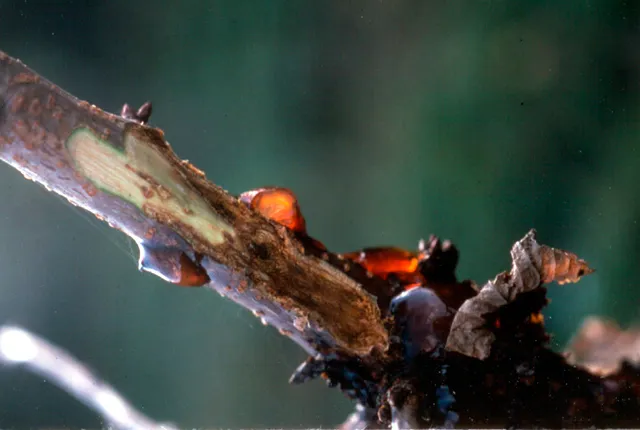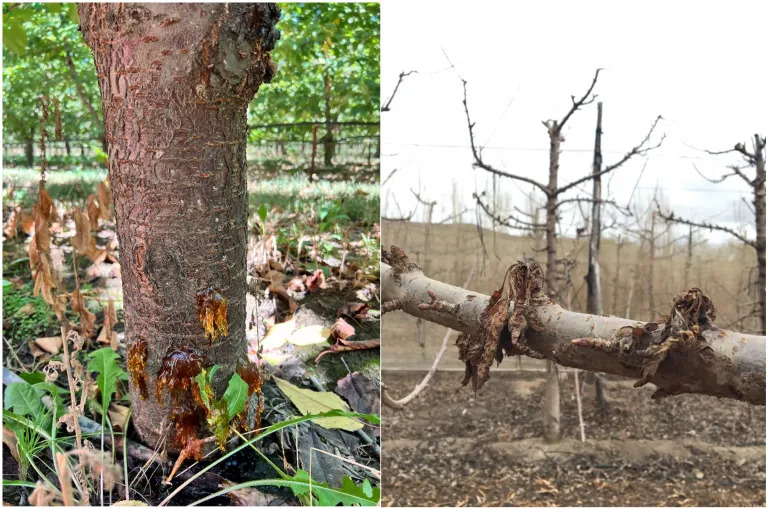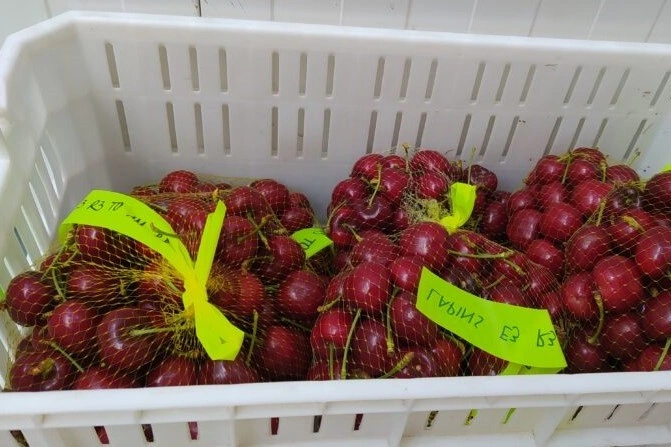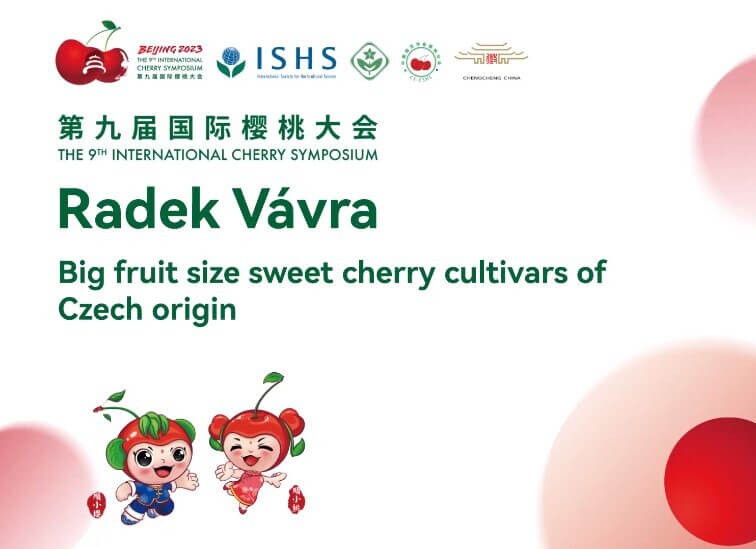The bacterial canker of sweet cherries is caused by the bacterium Pseudomonas syringae pv. syringae (PSS) van Hall (Romoli, 1963, Latorre et al., 1980). This pathogen is commonly associated with humid and cold climates (Latorre, 2008). The pathogen P. syringae can colonize any plant tissue without causing infections or symptoms. However, the bacterium requires a wound or natural opening, along with conditions of moisture or standing water, to infect trees. As a result, autumn becomes a critical period for preventive management.
 Figure 1.
Figure 1.
Symptoms in Sweet Cherry
The most evident symptoms of bacterial canker in sweet cherry are a dark canker, often accompanied by gummosis (reddish-brown exudate) (Latorre, 2008, CABI, 2020) (Figure 1). Symptoms commonly develop at the base of trees, particularly in younger trees, which are more susceptible to damage caused by machinery, rodents, frost, and irrigation. These factors provide ample opportunities for PSS infection.
 Figure 2: Gummosis due to bacterial infection in sweet cherry (left) (photo: C. Serban), dormant wood with bacterial infection in spurs (right) (photo: B. Sallato).
Figure 2: Gummosis due to bacterial infection in sweet cherry (left) (photo: C. Serban), dormant wood with bacterial infection in spurs (right) (photo: B. Sallato).
Management Recommendations
- Early defoliation: Leaf fall creates a natural wound that can become an infection site for the pathogen. Early defoliation, when conditions are dry and warm, reduces the risk of infection (see Early Autumn Defoliation for Sweet Cherry).
- Prevent damage: Avoid damaging trees in moist conditions, especially during activities like weeding, pruning, or any mechanical wounding, as this increases the risk of infection.
- Weed management: Since weeds can host PSS, adequate weed management will reduce the risk of disease transmission.
- Pruning: Prune and remove infected tissues during dry weather, cutting below the visible canker. To prevent transmission through pruning tools, consider removing cankers before routine pruning.
- Severely infected trees: Remove severely infected trees to reduce the spread of the disease.
- Frost protection: Pseudomonas syringae is an ice-nucleating bacterium and can freeze cellular water at higher temperatures. Protecting trees from frost reduces the risk of damage.
- Copper resistance: In many regions of the United States and the world, copper-resistant strains of the bacterium render copper-based sprays ineffective.
Source: WSU
Images: WSU; Plantsdb
Cherry Times - All Rights Reserved












